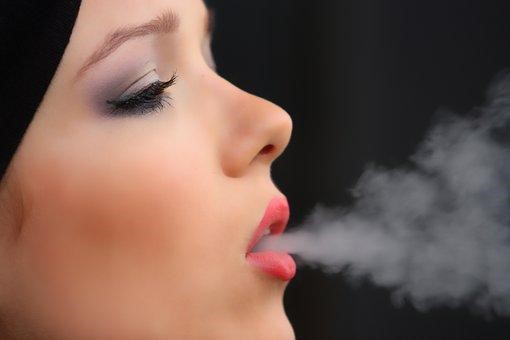How Cannabinoids Affect Men and Women Differently
3/7/2022 8:17 PM
Cannabis is the world’s most commonly cultivated recreational drug. This trend might not change any time soon. That’s owing to numerous scientific findings which suggest that marijuana can provide tons of health benefits in addition to its psychoactive properties.
In fact, according to recent statistics, the global cannabis market was estimated at USD 20.5 billion in 2020 and might grow to USD 90.4 billion by 2026. This is the most evident proof that people are no longer consuming marijuana only to get ‘high’ and accrue some health benefits. Some of the conditions medical cannabis can treat include pain, inflammation, nausea, seizures, anxiety, and insomnia.
Like most herbs, marijuana’s overall effects depend on several factors. Common ones include age, body weight, delivery method, cannabinoid potency, and serving amounts.
Recent findings also indicate that weed might affect men and women differently. This post shall attempt to explain why the effects of marijuana may be sex-dependent, based on several credible findings.

What Are Cannabinoids?
All medicinal herbs produce certain compounds that account for the plants’ overall therapeutic properties. These compounds can take various forms, including alkaloids, cannabinoids, and antioxidants.
Cannabinoids, also known as phytocannabinoids, are the specific therapeutic compounds in cannabis. There are at least 120 officially identified cannabinoids in marijuana. That includes the two most popular and widely-studied ones, namely cannabidiol (CBD) and tetrahydrocannabinol (THC).
Both cannabidiol and tetrahydrocannabinol offer plenty of health benefits. These compounds also come in different forms, including tinctures, dried cannabis flowers, gummies, to mention but a few.
Gummies are particularly preferred as they allow users to consume cannabis discreetly. Gummies are also easier to administer since they come with predetermined cannabinoid doses. And the good news is that you can get chill gummies from trusted retailers who deal in high-quality CBD and other cannabis products.
But while both cannabidiol and tetrahydrocannabinol provide several health benefits, THC also delivers additional mind-altering effects. THC is the primary cannabinoid that gives marijuana its psychotropic properties. Other common cannabinoids besides CBD and THC include cannabinol (CBN), cannabigerol (CBG), and cannabichromene (CBC).
How Do Cannabinoids Affect Men and Men Differently?
Cannabinoids generally interact with the body via the endocannabinoid system. The endocannabinoid system is a complex cell-regulatory system that comprises a vast network of endocannabinoid receptors and chemical neurotransmitters known as endocannabinoids. This neuro-modulatory system regulates numerous functions in the central nervous system as well as in the peripheral organs. Examples include endocrine activities, pain signalling, sleep patterns, learning and memory, eating, and immune responses.
Cannabinoids impact the endocannabinoid system by affecting both its receptors and neurotransmitters.

For instance, tetrahydrocannabinol binds to receptors called CB1, which are more expressed in the brain and central nervous system. Cannabidiol, on the other hand, affects CB2 receptors that occur in peripheral organs like the skin, gut, and extremities.
One study established that estrogen receptors occur along the pathway for THC intake. This phenomenon might explain why cannabis produces more dramatic effects in female users than their male counterparts. That’s considering that women have more estrogen levels than men.
Another significant inference from the above study was that cannabinoids might affect women intensely during ovulation. That’s because estrogen secretion and activity tend to peak around the same period.
Other Reasons Cannabinoids Affect Men and Women Differently
Consumption Pattern
Not only do men consume cannabis in more significant amounts. Men also tend to be chronic marijuana users, with women only administering the herb occasionally.
Besides, male weed users tend to lean more towards tetrahydrocannabinol, while women generally favour cannabidiol. In other words, there’s a disproportionately higher percentage of male recreational cannabis users than females.
This consumption pattern might help explain the difference in the effects of weed between men and women. Men are more likely to be heavy cannabis users, which explains why they also have a higher prevalence of side effects than women.
Tolerance
There’s a common misconception that women get more intense marijuana ‘highs’ than men due to their higher hormonal activity. Remember that we’ve also drawn a nexus between THC, the primary mind-altering compound in weed, with estrogen.
However, estrogen levels alone may not cause a world of difference in the effects of marijuana across the sexes. There are always several factors at play besides hormonal activity.
Women are known to have a higher pain tolerance. Since medical marijuana is mainly prescribed for pain treatment, the implication is that women in pain will require relatively higher cannabinoid doses than their male counterparts.
Body Weight Distribution
Women tend to have more bodyweight distribution issues than men. This is especially true for women with extra tires around their belly section. Note that bodyweight is a crucial factor determining how cannabinoids exert their effects. And that explains why marijuana tends to have more uniform effects in men than women.
Once they enter the bloodstream, cannabinoids can access most parts of a man’s body in about the same duration compared to women.
Wrap Up
Cannabinoids deliver different effects in men and women. However, it’s worth noting that studies on the sex-dependent effects of marijuana are still in their infancy. That means you’re likely to come across tons of conflicting information. The best way to have better luck with cannabinoids is to dose them in moderation. Remember that marijuana can be incredibly effective at lower doses but counterproductive if overdosed.









